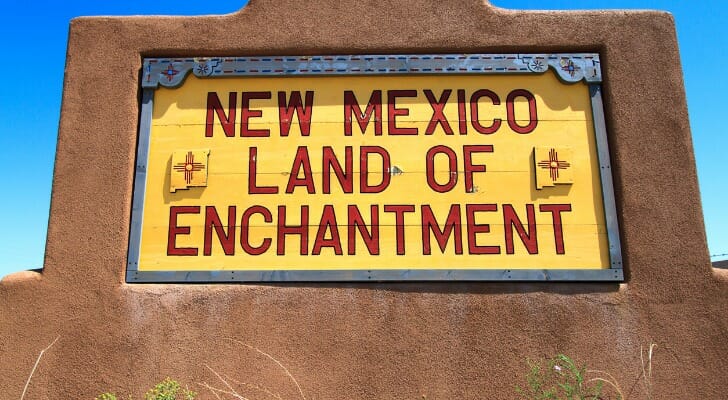A living trust is a legal document that places your assets into a trust for your benefit during your lifetime and specifies how these assets should be distributed upon your death. In New Mexico, setting up a living trust involves several key steps, including selecting a trustee, transferring assets into the trust, and drafting the trust document according to state laws. Whether you’re aiming to protect your estate from probate or simply want to ensure your wishes are honored, understanding the nuances of creating a living trust in New Mexico is essential.
When you need help with your own estate planning, consider working with a financial advisor.
Creating a Living Trust in New Mexico
In New Mexico, creating a living trust can be a strategic move for those looking to streamline the transfer of their assets and maintain privacy, as the details of a trust do not become public record. Here are the steps to making a living trust in the Land of Enchantment:
- Figure out which type of trust is best for you: If you’re single, a single trust is probably what you’ll want. If you’re married, you’ll likely want to make a joint trust. With a joint trust, you and your partner can store your individually owned assets as well as jointly held assets like cars or homes.
- Take inventory of your assets: Most of your assets and property, including investments and real estate, will be eligible to be stored in a living trust. A few things aren’t, like 401(k) plans. However, you can name the trust as your account’s beneficiary. Also use this time to gather documents like home deeds and car titles.
- Choose your trustee: You can pick someone else or name yourself for now. If you name yourself, you should also pick a successor trustee to take over management of your trust and ensure proper distribution of your property to your beneficiaries when you’ve died. Decide now to whom you want to pass on your property and assets.
- Write up the trust document: You can do this by yourself online or hire a lawyer to help you.
- Sign the trust: This must be done in front of a notary public.
- Fund the trust by moving property into it: You can do this yourself, but the paperwork can be tricky, so a lawyer might be needed.
What Is a Living Trust?
A living trust is a legal framework, established by a document, that can be used to store property and assets. A trustee is in charge of ensuring the property and assets stored within the trust are distributed to the trust’s beneficiaries according to its instructions. You can name yourself as the trustee or pick someone else. Many people choose their child or another trusted relative to serve as trustee.
There are two main types of living trusts. The first is an irrevocable living trust, which is more permanent. Once property is placed in an irrevocable living trust, it cannot be removed without the permission of everyone named in the trust. The trust wholly owns the property stored in it, and taxes are paid via the trust.
A revocable living trust, meanwhile, offers more flexibility. The person who creates the trust, also known as the grantor or settlor, can modify the trust and remove property from it as he or she wishes. The grantor maintains ownership of the property and thus pays taxes on it as normal.
How Much Does It Cost to Create a Living Trust in New Mexico?
The cost of creating a living trust depends on the method you use to do it. One way to create a living trust is to use an online program and write the trust yourself. This will likely cost a few hundred dollars or so. The other option is to hire an attorney to help you draw up the trust. This option will probably cost at least $1,000, with the exact cost depending on your attorney’s fees.
While it is cheaper to make a living trust by yourself, there are some potential pitfalls to DIY estate planning. It requires a lot of attention to detail, so if you’re not going to put the time and energy into the research needed to get it right, you may be better off getting a lawyer. Just make sure the lawyer is a trust specialist rather than just an estate planner, and make sure you know the lawyer’s fees upfront to avoid any surprises.
Why Get a Living Trust in New Mexico?

The reason most people form a living trust is so that when they die, their family can avoid going to probate court, a time-consuming and potentially costly process that can sometimes constitute an invasion of privacy. That isn’t as much of a concern in New Mexico, as the state has adopted the Uniform Probate Code, which simplifies the probate process. For this reason, a living trust might not be necessary in New Mexico, especially for smaller and less complex estates, though, of course, you’ll still need an estate plan.
There are other reasons a living trust might be worthwhile, though. It can be helpful if you plan to leave property to a minor, as you can leave that property inside the trust under the trustee’s care until the child reaches a certain age. A living trust can also be helpful in the event you become incapacitated. As you’ll already have selected a trustee through your living trust, you’ll avoid conservatorship.
Who Should Get a Living Trust in New Mexico?
Living trusts certainly aren’t only for the wealthy. However, the fact that New Mexico has adopted the Uniform Probate Code means that unless your estate is especially large or complex, creating a living trust may be more trouble than it’s worth. Additionally, the state further simplifies the probate process for estates that are worth $50,000 or less.
There are downsides to living trusts that you should take into account when you’re deciding whether to get one. Living trusts are generally more difficult and expensive to set up than wills. Moreover, living trusts allow a longer time for legal challenges after you die, which could increase the likelihood of issues arising.
Living Trusts vs. Wills
When planning your estate in New Mexico, understanding the differences between living trusts and wills is crucial. Both legal instruments serve to manage and distribute your assets, but they operate in distinct ways. Even if you have a living trust, you’ll need a will to direct any property not placed in the trust. Additionally, wills have the following capabilities that living trusts do not:
- Naming an executor
- Establishing guardianship for children who are minors
- Selecting managers for children’s property
- Providing instructions on how to pay taxes and debts
For a better understanding of the similarities and differences between wills and living trusts, see the table below:
Living Trusts vs. Wills
| Task | Living Trusts | Wills |
| Names a property beneficiary | Yes | Yes |
| Allows revisions to be made | Depends on type | Yes |
| Avoids probate court | Yes | No |
| Requires a notary | Yes | No |
| Name a property beneficiary | No | Yes |
| Name guardians for children | No | Yes |
| Requires witnesses | No | Yes |
Living Trusts and Taxes in New Mexico

Having a living trust likely won’t impact your taxes, but you should still know about the New Mexico estate tax and the New Mexico inheritance tax as you plan your estate.
Luckily, there is no estate tax or inheritance tax in New Mexico. The federal estate tax only applies to estates that are worth $13.99 million in 2025 or $27.98 million for couples. Each of these figures is doubled for married couples’ estates.
Bottom Line
Creating a living trust in New Mexico is a strategic step towards ensuring your assets are managed and distributed according to your wishes, while also potentially bypassing the lengthy probate process. Additionally, it’s important to regularly review and update your trust to reflect any changes in your circumstances or wishes. By taking these steps, you can create a living trust that provides peace of mind and financial security for you and your beneficiaries. Whether you’re looking to protect your assets or streamline the inheritance process, a living trust offers a flexible and effective solution tailored to your needs.
Estate Planning Tips
- When you are estate planning, don’t hesitate to ask for professional help from a financial advisor. Finding a financial advisor doesn’t have to be hard. SmartAsset’s free tool matches you with vetted financial advisors who serve your area, and you can have a free introductory call with your advisor matches to decide which one you feel is right for you. If you’re ready to find an advisor who can help you achieve your financial goals, get started now.
- The most important part of estate planning? Having a plan. Even if you don’t make a living trust right away, having some sort of plan in place is key to making things easy for your family if something happens to you. Don’t make the estate planning mistake of putting that off.
- If you want to get a head start on your own estate plan, make sure you start with a proper checklist so you can get started on the right activities.
Photo credit: ©iStock.com/djedzura, ©iStock.com/JannHuizenga, SmartAsset.com
